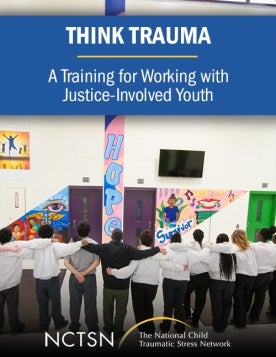
Making Think Trauma Stick: A Guide to Training and Implementation
Is a virtual guide that walks through Making Think Trauma Stick: A Guide to Training and Implementation, developed by the National Child Traumatic Stress Network (NCTSN).
The following resources on child trauma were developed by the NCTSN. To find a specific topic or resource, enter keywords in the search box, or filter by resource type, trauma type, language, or audience.

Is a virtual guide that walks through Making Think Trauma Stick: A Guide to Training and Implementation, developed by the National Child Traumatic Stress Network (NCTSN).
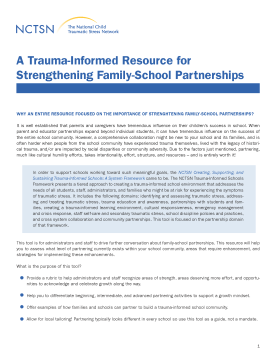
Helps schools assess what level of partnering currently exists within their school community, areas that require enhancement, and strategies for implementing these enhancements. This tool is for administrators and staff to drive further conversation about family-school partnerships.
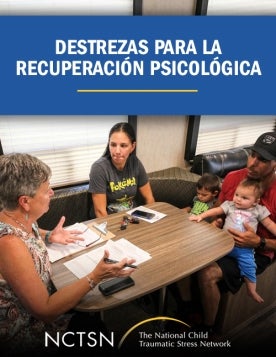
Tiene como objetivo ayudar a los sobrevivientes a adquirir destrezas para manejar la angustia y afrontar el estrés y la adversidad luego de un desastre. Este curso utiliza componentes para el tratamiento de salud mental que han demostrado ser útiles ante varias situaciones postraumáticas.
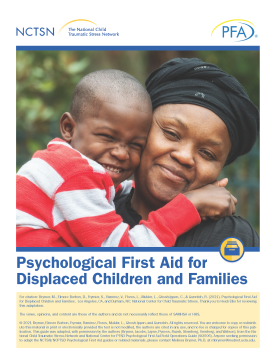
Is a evidence-informed flexible approach to assist displaced children and families immediately after arriving in the US.
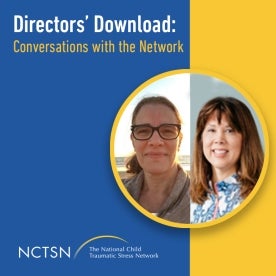
Features Alex Barker and Diane Lanni, the first family and young adult partners on the NCTSN Steering Committee. Alex and Diane share their journey towards their involvement in the NCTSN, their contributions to the Steering Committee, and lessons they have learned along the way.

Helps child welfare agencies support children and youth during and after natural disasters. This toolkit is for child welfare staff, supervisors, and administrators who work with and on behalf of children, youth, and families who experience a natural disaster.
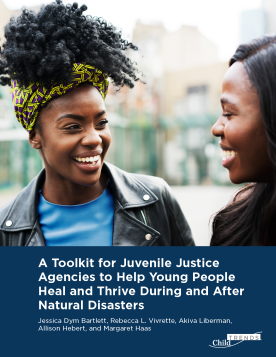
Helps juvenile justice agencies support children and youth during and after natural disasters. This toolkit is for juvenile justice staff, supervisors, and administrators who work with and on behalf of children, youth, and families who experience a natural disaster.
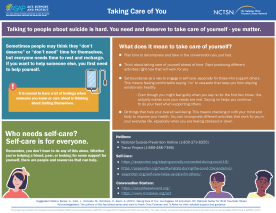
Provides information to help youth practice self-care. This fact sheet includes information on what it means to take care of yourself, as well as recommended hotlines and conversation starters. This resource is most helpful for youth ages 12 and older.
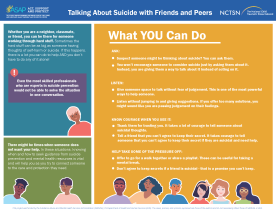
Provides information to support youth talking about suicide with friends and peers. This fact sheet includes what you can do, action words, skills for getting help, as well as myths and facts about how to help as a peer. This resource is most helpful for youth ages 12 and older.
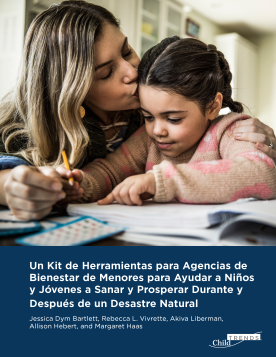
Ayuda a las agencias de bienestar infantil a apoyar a los niños y jóvenes durante y después de los desastres naturales.
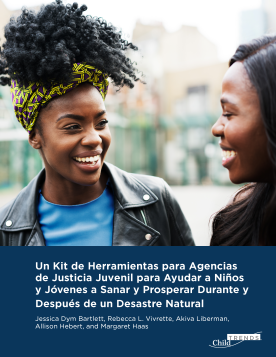
Ayuda a las agencias de justicia juvenil a apoyar a los niños y jóvenes durante y después de los desastres naturales.

Provides information to help youth know what words to use when talking about suicide with friends and peers. This fact sheet includes when you should ask, examples of what to say, when to get help, as well as next steps. This resource is most helpful for youth ages 12 and older.